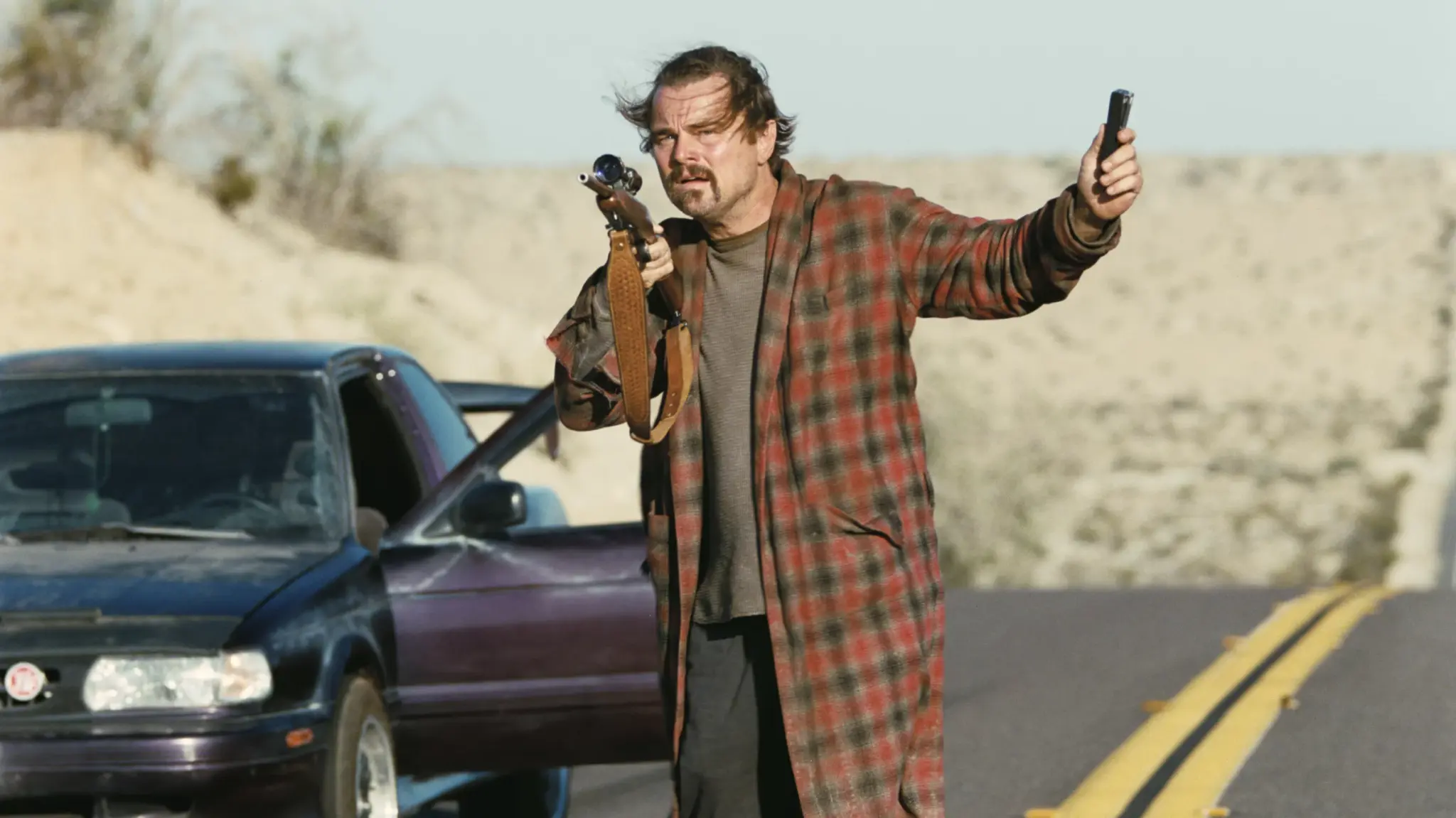
Courtesy of Warner Bros. Pictures
“We failed, but maybe you will not.”
This line, uttered at the conclusion of “One Battle After Another” by fiery revolutionary Perfidia Beverly Hills (Teyana Taylor), reflects both the melancholy and hope central to the film. Loosely based on the Thomas Pynchon novel “Vineland,” “One Battle After Another” transplants Pynchon’s 1980s-set exploration of aging revolutionaries into the modern day. It’s the newest movie from writer and director Paul Thomas Anderson (known for films such as “Boogie Nights” and “There Will Be Blood”), who arose during the independent cinema boom of the 1990s and is now regarded as one of the greatest working American filmmakers.
“One Battle After Another” follows washed-up revolutionary Bob Ferguson (Leonardo DiCaprio), who is pulled back into action when his daughter, Willa Ferguson (Chase Infiniti), goes missing. A cursory Google search reveals the near-universal acclaim this movie has received. Finding a review not proclaiming “One Battle After Another” is a masterwork is more difficult than finding one that does. Some have even gone as far as to brand Anderson’s work a revolutionary statement, a sort of call to action in our current political climate. As a film, there’s absolutely no denying the mastery on display. As a revolutionary text, however, a bit more scrutiny is required. Both are worth discussion.
What separates great filmmakers from the true visionaries? The answer is twofold. First, the masters possess an instinctual, almost supernatural sense of rhythm. Where to place the camera, how to regulate pacing and when to deploy a musical cue — these things are a sixth sense as much as learned technical prowess. Second is the ability to filter the real world through the wholly unique lens of the artist into a movie world and use the latter to critique the former. Their commentary is sometimes subtle, sometimes on the nose, but always incisive. Many directors usually have one gift or the other; the best of the best have both. With “One Battle After Another,” Paul Thomas Anderson joins that league.
Nowhere is that rhythmic ability more apparent than in the film’s construction. The gorgeous VistaVision cinematography lends a thrillingly tactile feeling to mesmerizing action sequences. Anderson’s ever-moving camera and trademark “oners” are astonishing but never showy — a clear evolution from his early work. Jonny Greenwood’s phenomenal score balances a traditional orchestral sound with off-kilter, discordant piano keys (reminiscent of the music in Anderson’s “Punch-Drunk Love”). Editor Andy Jurgensen, a UC Santa Barbara alumnus, injects the film with energy and kinetic pacing. The sound design and musical needledrops are similarly on point. Most impressive, however, is Anderson’s use of space. The final set piece employs the distinctive geographic qualities of its setting to depict a car chase unlike anything on screen before. Simply put, “One Battle After Another” is blockbuster filmmaking in top form.
In September 2022, The Film Magazine published “Capturing Modernity: The Challenge of Portraying the Contemporary World”. In the influential piece, Author Noah Sparkes notes that, by sticking to period pieces or simply ignoring the presence of the internet in their films, many current directors are failing to engage with modernity. He posits a crucial question: “[W]here then is the seminal modernist satire for the 21st Century?” “One Battle After Another” is the answer.
From the Martin Scorsese-esque plot structure of “Boogie Nights” to the Robert Altman-inspired ensemble drama “Magnolia,” Anderson has always worn his cinematic influences on his sleeve. Out of its many inspirations (including a fun full-circle nod to “Terminator 2: Judgment Day”), “One Battle After Another” aligns most closely with the work of another iconic director: Stanley Kubrick. Anderson possesses the rare Kubrickian ability (see “Dr. Strangelove”) to locate the themes of the current political moment and translate them into satire that both rings true and exposes the ridiculousness of it all. The character of Colonel Lockjaw (Sean Penn) and his burning desire to join the The Christmas Adventurers Club represents a modern white nationalist archetype in an ingenious, absurdist way.
The script of “One Battle After Another” deftly balances its strong emotional core with raucously hilarious and instantly quotable dialogue, memorable characterization and an unpredictable cat-and-mouse plot. The variety of tones and characters somehow cohere into a unified whole, all while retaining the personal perspective of the auteur (those familiar with both Anderson’s work and personal history will find resonances all over this movie).
Key to establishing the various tones of “One Battle After Another” is its fantastic cast. Anderson juxtaposes the more stylized performances (Sean Penn’s extremely mannered transformation) against the more restrained (Regina Hall’s understated interiority) to electrifying effect. Teyana Taylor and Chase Infiniti deliver star-making turns, and Benicio del Toro’s cool-as-a-cucumber demeanor makes for perhaps the best character in the ensemble. Finally, Leonardo DiCaprio’s “Big Lebowski”-esque depiction of revolutionary-turned-stoner Bob Ferguson is yet another home run from the superstar. Every small part is perfectly performed, yet another testament to Anderson’s direction and eye for casting.
With its merits now thoroughly enumerated, the larger question remains: To what extent, if any, is “One Battle After Another” revolutionary? That question anticipates a larger one: Can any Hollywood movie truly be revolutionary? It may be true that the film ends on a satisfying note of youthful activism, but that doesn’t validate the intensely hyperbolic strain of discourse that has materialized. As a product of a massive corporation intending to make a return on their investment, the obvious answer is no. That answer resides even within the text of the movie, where lines of Gil Scott-Heron’s poem, “The Revolution Will Not Be Televised” are used as a secret code between protagonists. Scott-Heron’s 1971 poem argues that revolution does not happen through screens. Instead, it must take place on the streets, in person. By referencing that song, Anderson acknowledges the limitations of his own art within the larger structures that produced it.
Ultimately, “One Battle After Another” may not be a rebellious call to action, but it’s impossible to refute its status as one of the defining works of art of the 2020s. It’s the rare instant classic and a movie that will certainly be talked about for years to come.
¡Viva la revolución!
10/10
A version of this article appeared on p. 9 of the Oct. 16, 2025 print edition of the Daily Nexus.




















